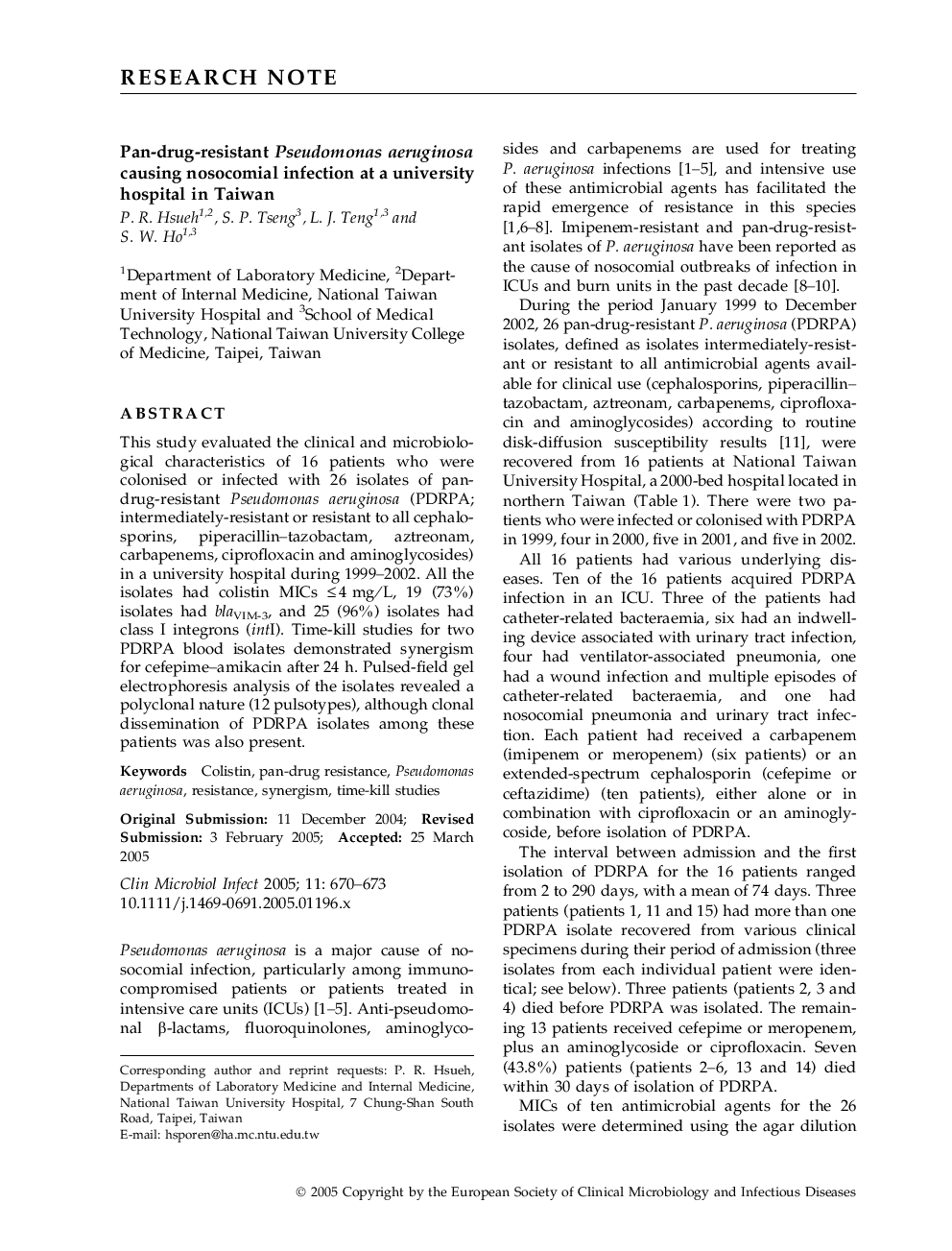| Article ID | Journal | Published Year | Pages | File Type |
|---|---|---|---|---|
| 9275988 | Clinical Microbiology and Infection | 2005 | 4 Pages |
Abstract
This study evaluated the clinical and microbiological characteristics of 16 patients who were colonised or infected with 26 isolates of pandrug-resistant Pseudomonas aeruginosa (PDRPA; intermediately-resistant or resistant to all cephalosporins, piperacillin-tazobactam, aztreonam, carbapenems, ciprofloxacin and aminoglycosides) in a university hospital during 1999-2002. All the isolates had colistin MICs â¤4 mg/L, 19 (73%) isolates had blaVIM-3, and 25 (96%) isolates had class I integrons (intI). Time-kill studies for two PDRPA blood isolates demonstrated synergism for cefepime-amikacin after 24 h. Pulsed-field gel electrophoresis analysis of the isolates revealed a polyclonal nature (12 pulsotypes), although clonal dissemination of PDRPA isolates among these patients was also present.
Related Topics
Life Sciences
Immunology and Microbiology
Microbiology
Authors
P.R. Hsueh, S.P. Tseng, L.J. Teng, S.W. Ho,
